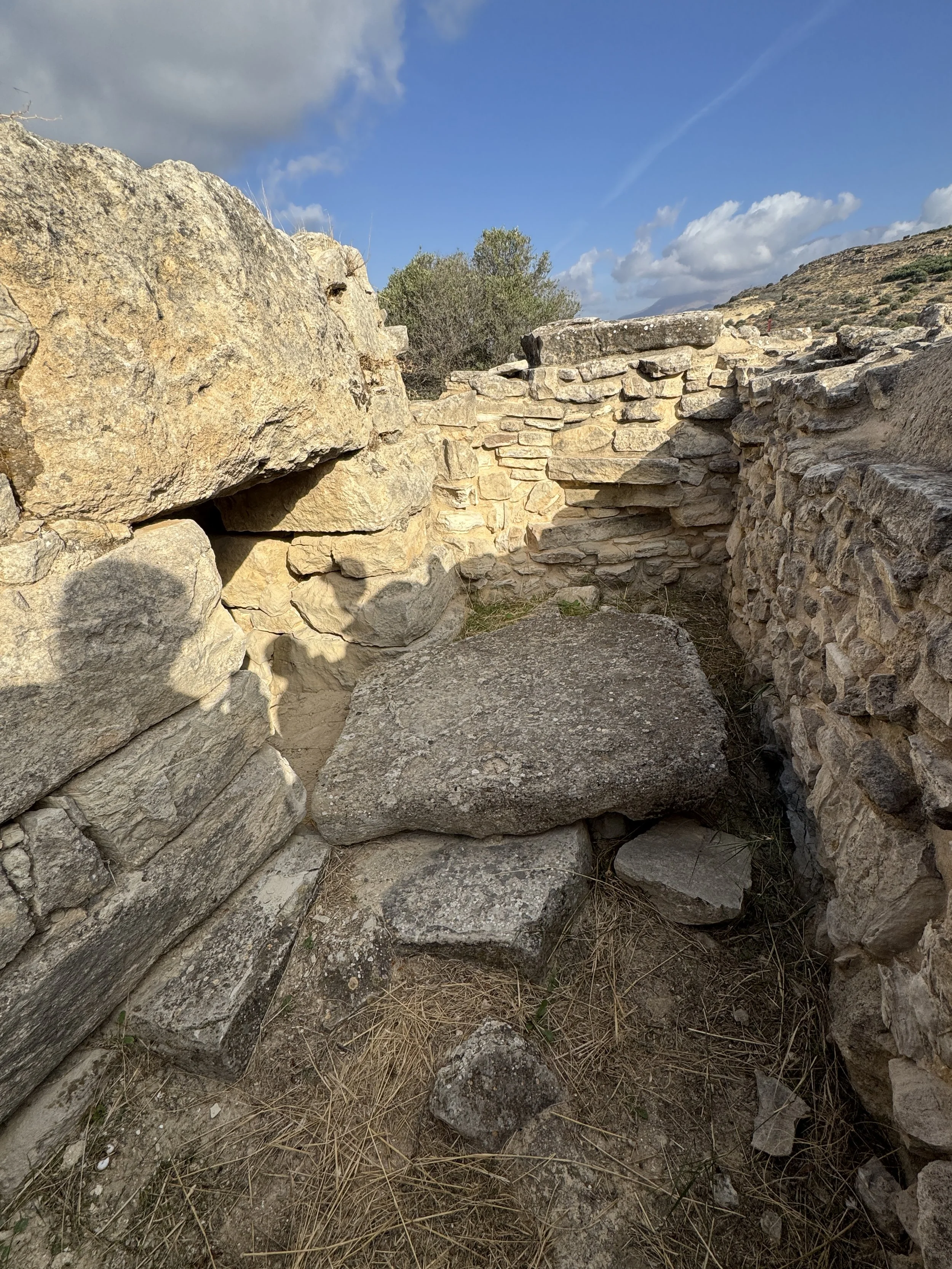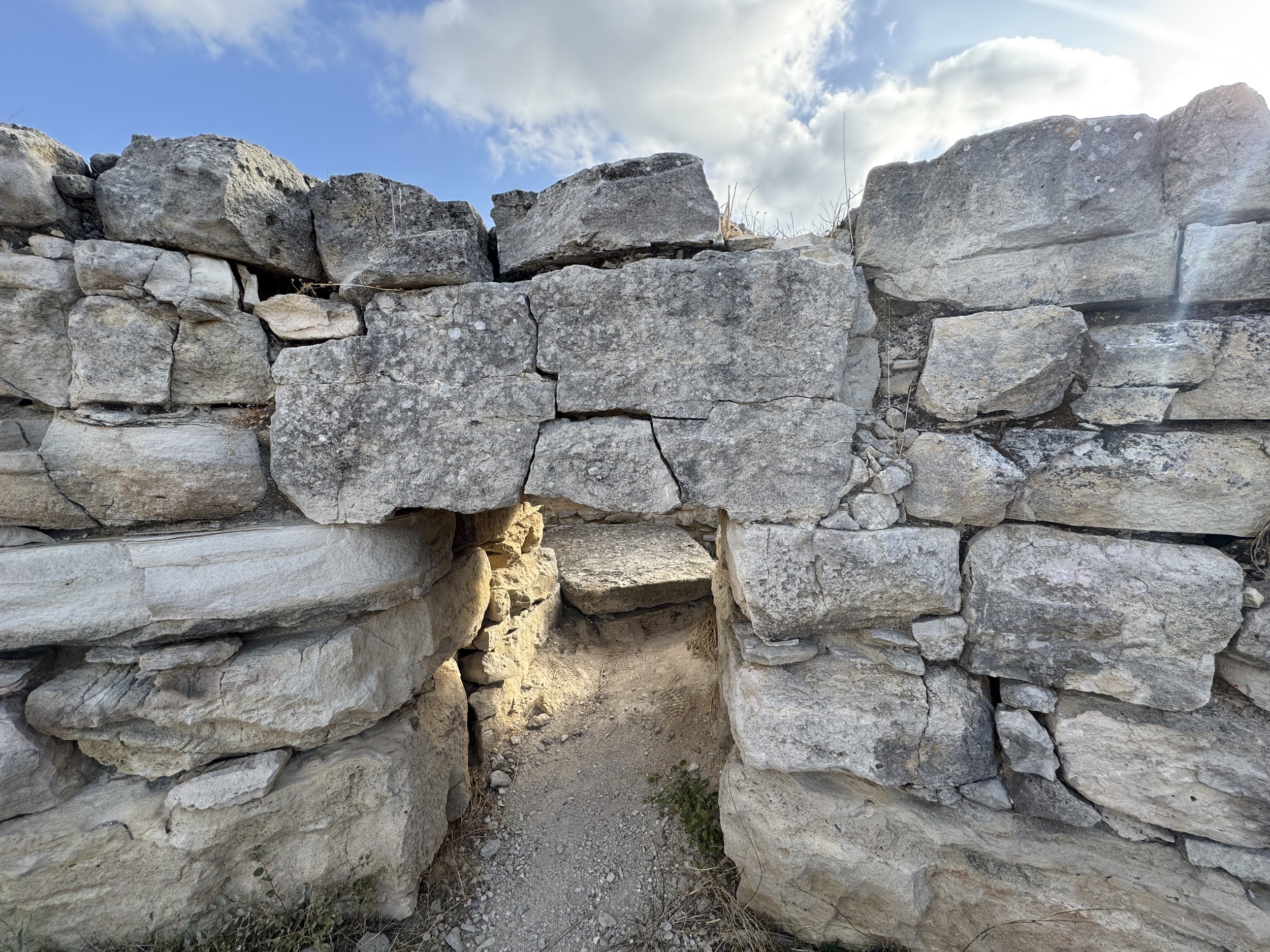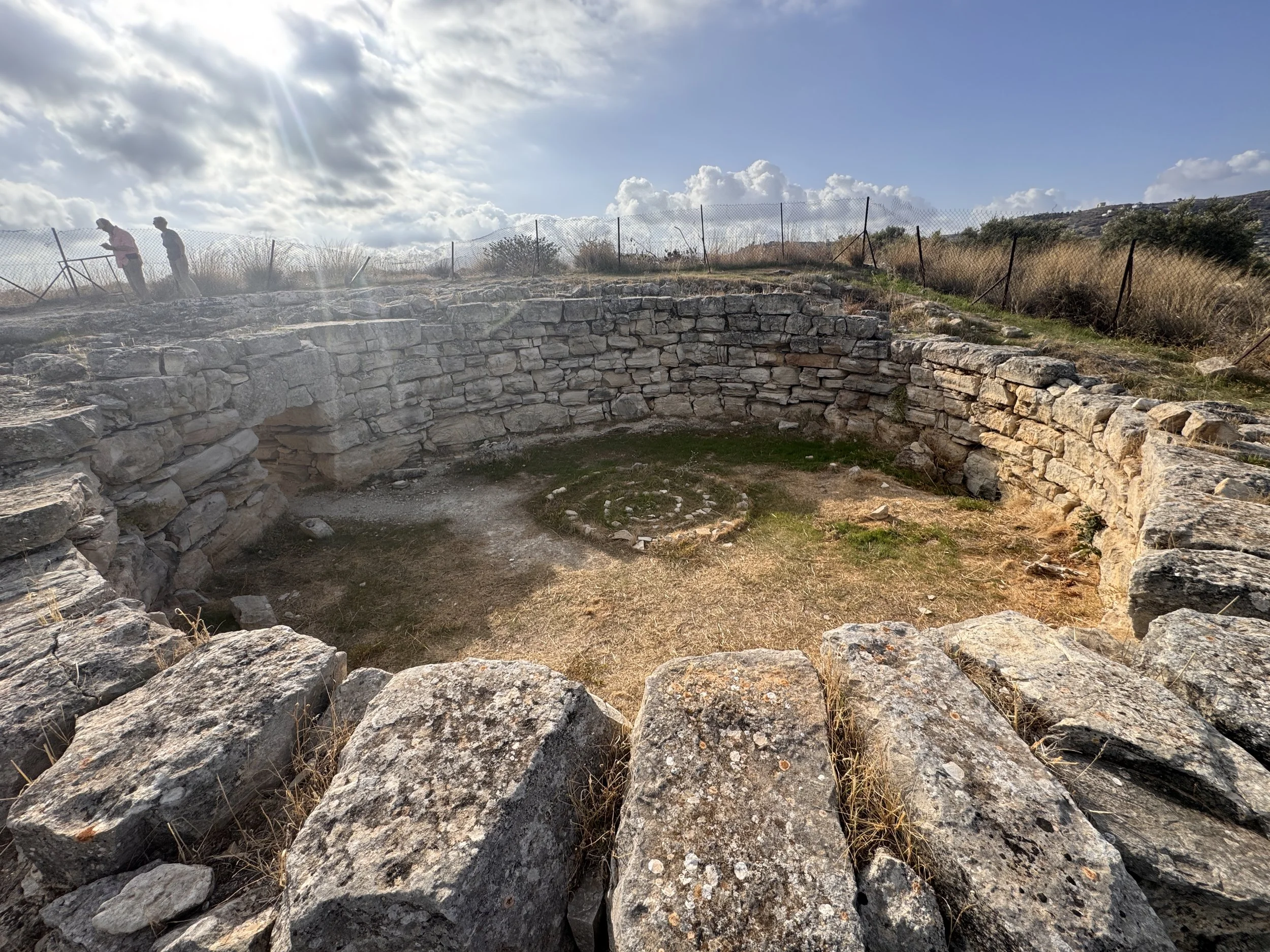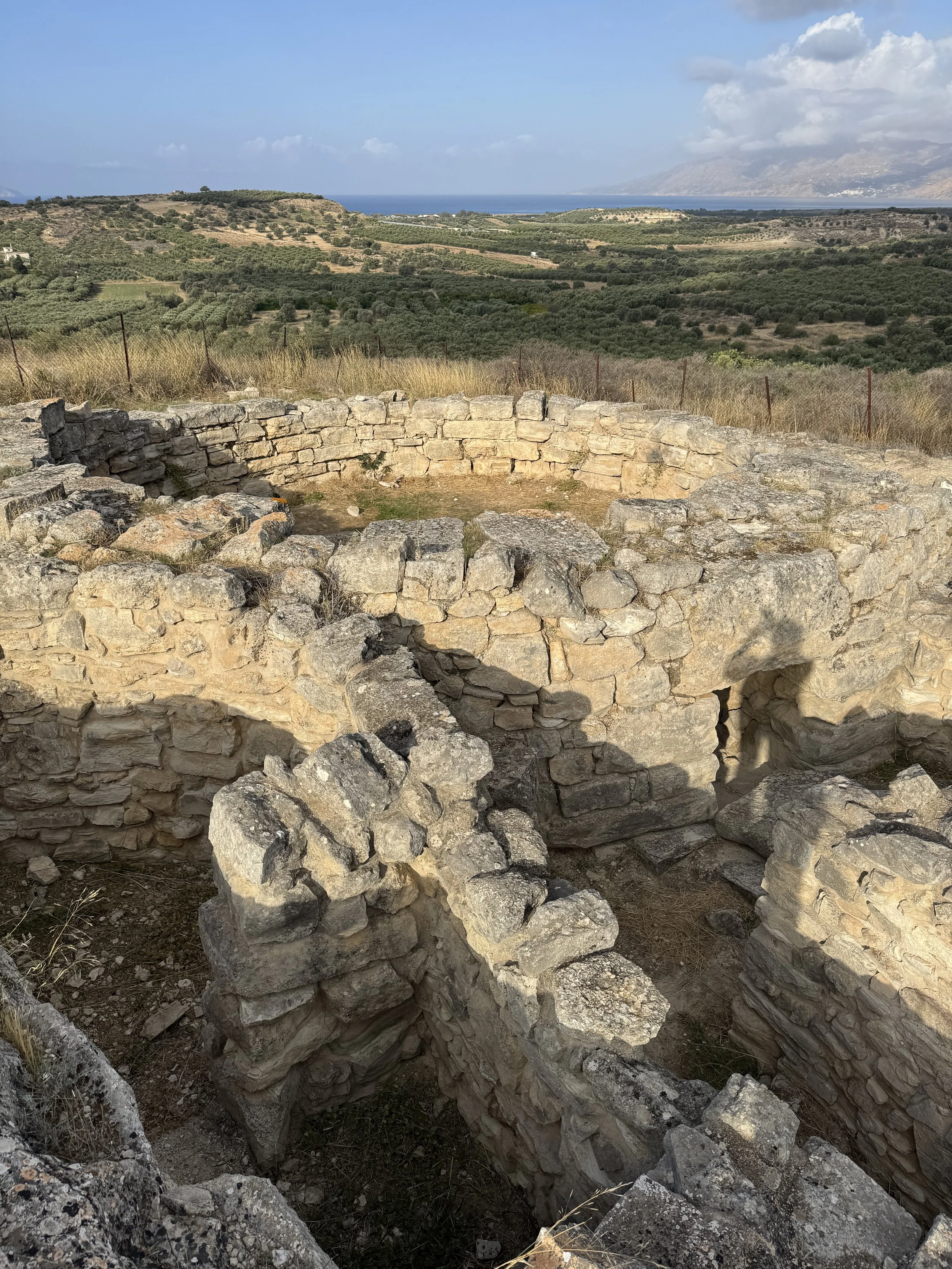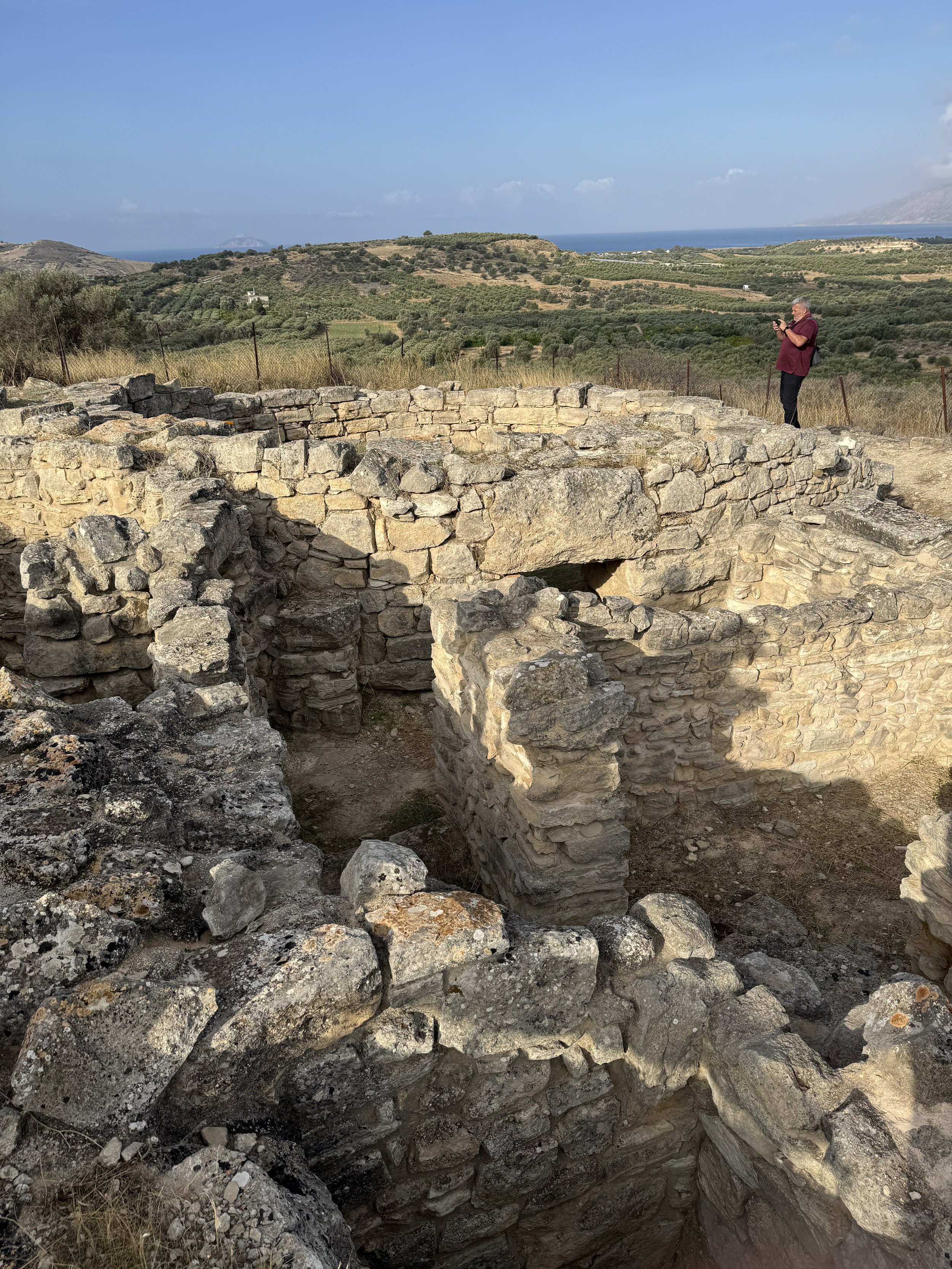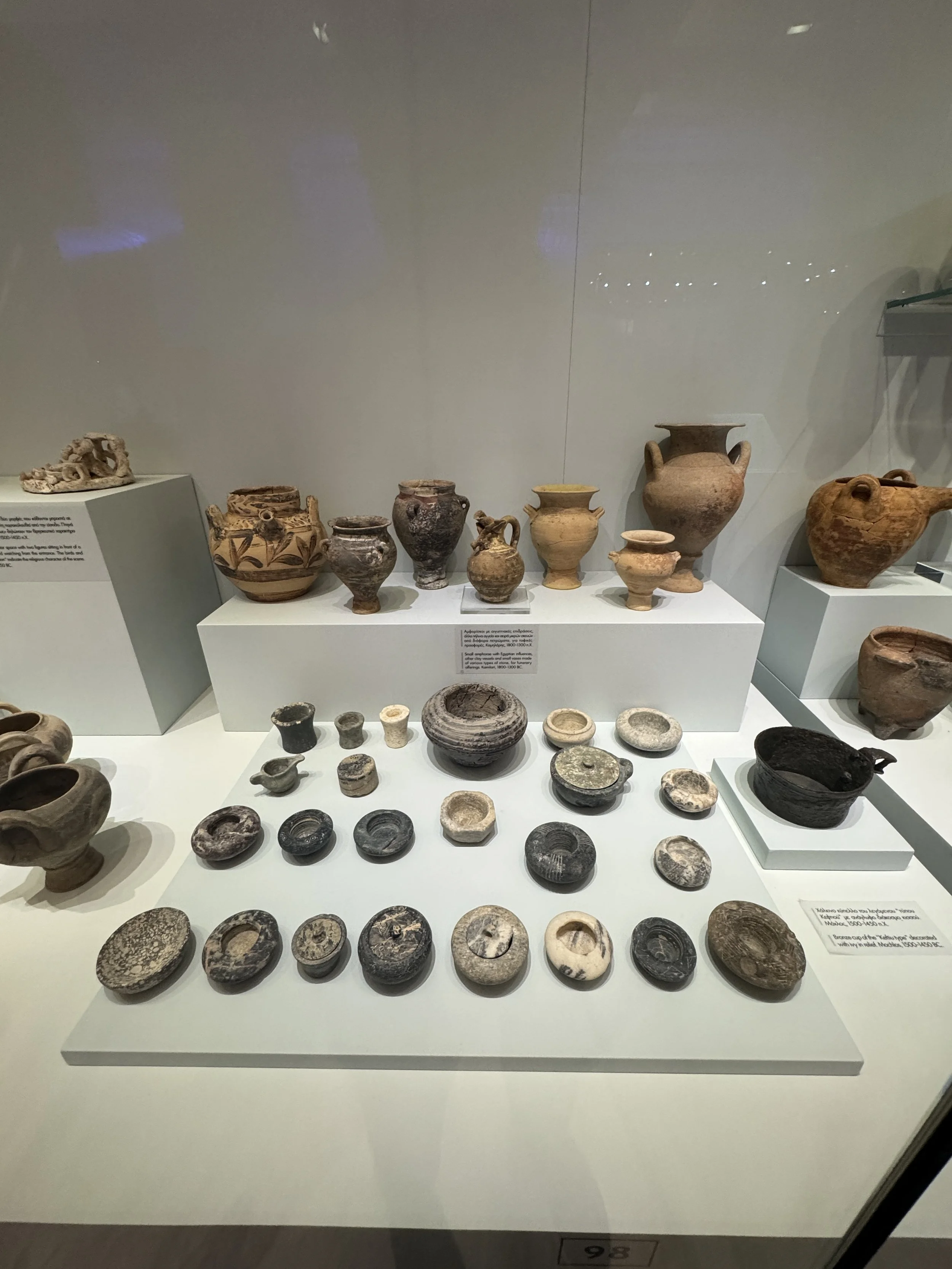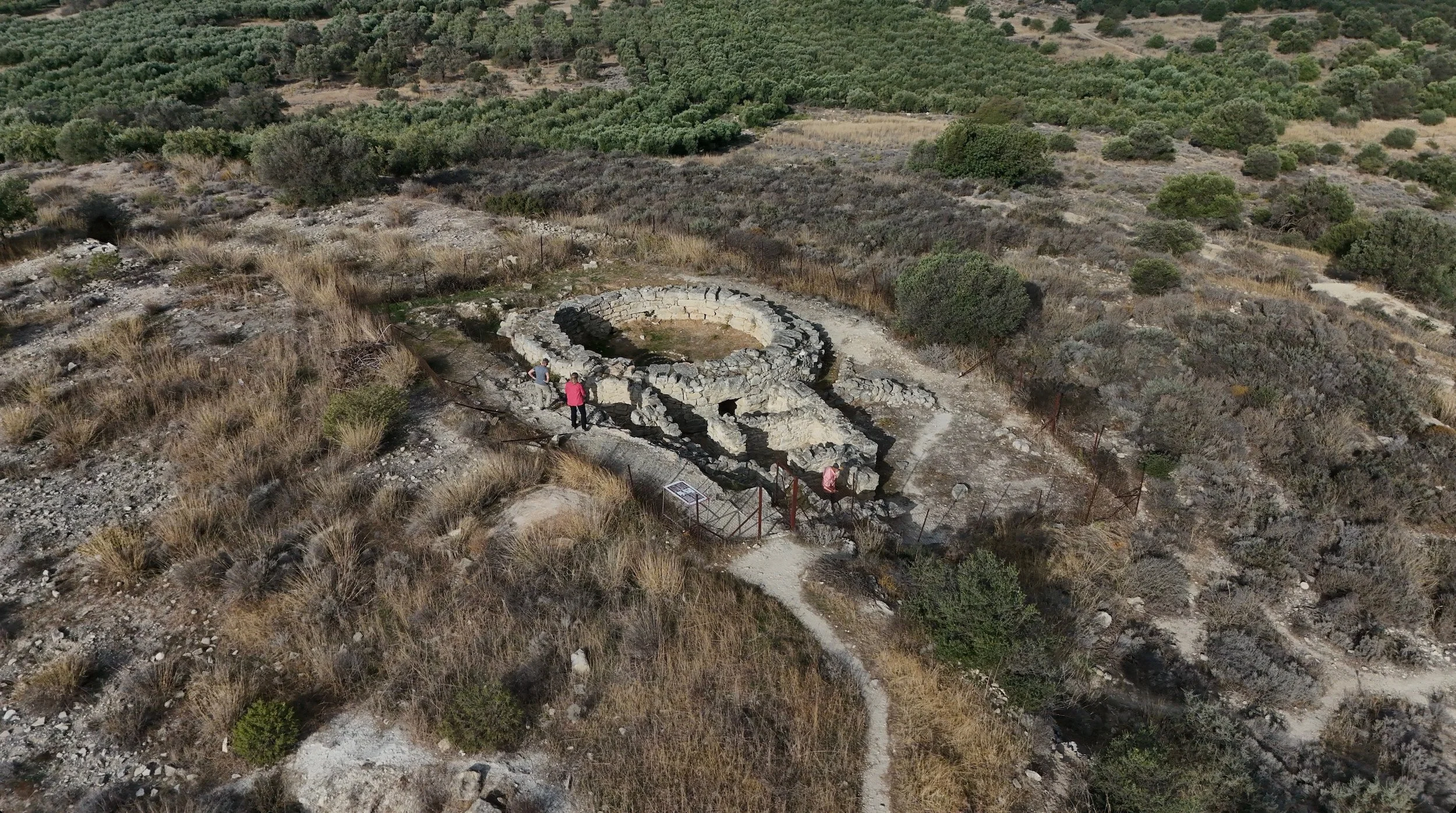Minoan Tholos Tomb, Kamilari Crete
Ancient Aegean cultures were likely the “Sea Peoples” who became the Philistines of the Old Testament. Although the Bible does not explicitly describe the Philistines’ origins, Amos 9:7 offers a clue, stating: “Did I not bring Israel up from the land of Egypt, and the Philistines from Caphtor…?”
“Caphtor” is often identified with Crete, aligning with both archaeological and Egyptian evidence that point to an Aegean origin. The Sea Peoples—among them the Peleset, identified with the Philistines—probably came from later Mycenaean-Aegean communities, possibly linked to Crete and the earlier Minoan civilization.
While visiting Crete this fall, we hiked to a Minoan tholos (circular) tomb dating to around 2000 BCE in the Kamilari area—standing amid the very landscape that may have given rise to the ancestors of the Philistines. Archeological evidence shows that Minoan people visited this tomb for hundreds of years. They added small rooms on to the tomb site over the centuries and left religious objects and vessels holding water / wine / oil. It’s a beautiful site on a ridge above the valley. Easy to understand how the ancient Minoans would have felt this a grand place to honor their ancestors. It took some searching, a few wrong turns, a few wrong hiking trails, but worth the effort to see such a fascinating and ancient site.
Minoan Tholos (circular) Tomb, Kamilari Crete
2000 BC




